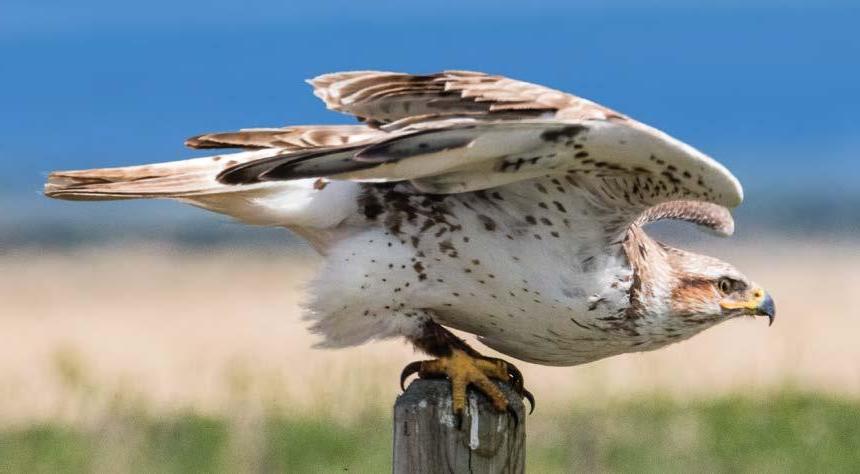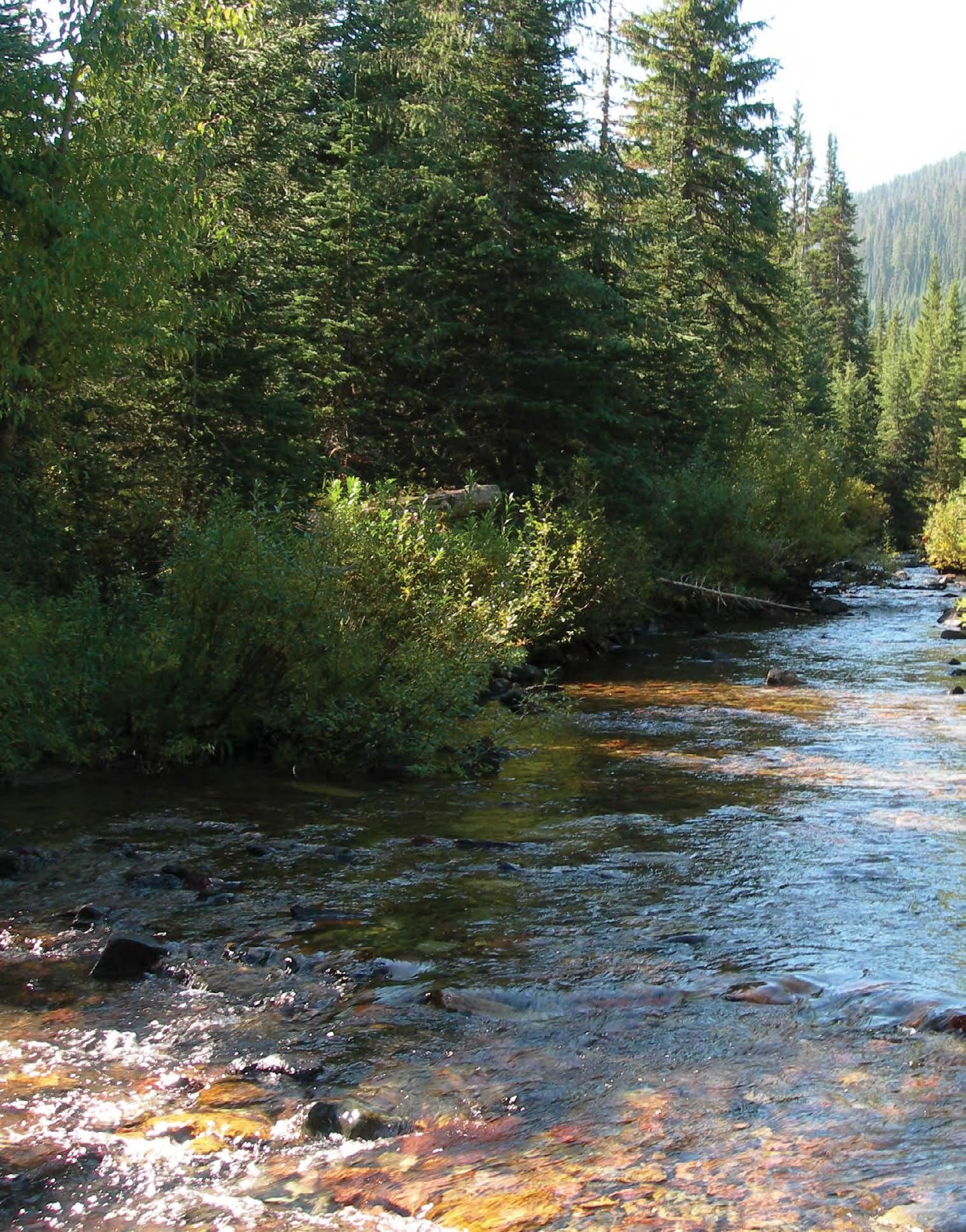
4 minute read
Working to Recover the Species
by Janet Kanters
The largest of the North American hawks, the ferruginous hawk (Buteo regalis) is a bird of the open prairie, so aring at great heights in search of prey to feed its ever-hungry nestlings.
Between March and mid-October in Alberta, this at-risk species is limited to the Grassland Region, which extends west from the Saskatchewan border to the Highway 2 corridor, and from the United States border as far north as Stettler.
The ferruginous hawk is listed as an Endangered species under the Alberta Wildlife Act and a Threatened species under Canada’s Species at Risk Act (SARA). According to Brandy Downey, species at risk biologist with Alberta Environment and Parks (AEP), the ferruginous hawk population has been monitored in Alberta since 1982. They discovered that between 1992 and 2000, the estimated number of nesting pairs in the province dropped significantly.
“This led to the listing of the species as Endangered in 2006,” said Downey. “Key threats for the species include habitat changes or loss of habitat, human disturbance at the nest site, human-caused mortalities, loss of nest site availability, and environmental issues.”
As part of Alberta’s management of the ferruginous hawk, a population inventory is completed every five years. The results of t h ese inventories determine if a review of the species status is warranted.
"Within the Alberta Species at Risk Program, species status is a key factor in determining a species priority,” Downey said. “As the ferruginous hawk is listed as an Endangered species under the Alberta Wildlife Act, it is a high priority species for the province of Alberta.”

Photo: ACA, Sam Vriend
How ferruginous hawks are counted:
The ferruginous hawk population estimate is based on the number of active ferruginous hawk nests identified within 150 survey blocks that are spread out across the provincial range of the species. Trained observers survey each block, which are four miles by four miles in size, to identify all active ferruginous hawk nests inside each block. The resulting population estimate is extrapolated from the number of active nests identified during the survey.
Endangered, now what?
The province released a Ferruginous Hawk Recovery Plan in 2009. Over the past 10 years, a number of recovery actions have been implemented, including nest site availability. Historically a ground-nesting raptor, research has shown that ferruginous hawk nests on above-ground structures have increased success. But above-ground features are limited in the hawk’s range.
“A number of recovery partners, including Alberta Conservation Association (ACA), have implemented an artificial nest platform program,” said Downey. “Through this program, artificial nest platforms have been installed in areas where natural ferruginous hawk nest site features have been lost.”
Habitat stewardship is another focus the province has worked on. For instance, private landholders manage the majority of ferruginous hawk habitat. Stewardship programs, such as Multiple Species at Risk (MULTISAR), work directly with private landholders to support continued good management of ferruginous hawk habitat.
According to Downey, the ferruginous hawk is sensitive to human activity around their nest sites. As part of the recovery plan, the Government of Alberta has developed standard mitigations for industrial development to conserve the ferruginous hawk and their nest sites from human disturbance. Industrial proponents operating in the ferruginous hawk range implement these standards.
Additionally, research by the University of Alberta (U of A) Raptor Ecology and Conservation Team (REACT) has modelled important habitat, measuring the impacts of human development on nesting/fledging success and migration return rates. This research is ongoing and was used in the development of the new Draft Alberta Ferruginous Hawk Recovery Plan.
“The new plan should be released in the next 12 months,” noted Downey. “As part of the government’s management of the species, the 2020 inventory will be completed in cooperation with our partners to determine the population trends in the province and provide an overall population estimate. The 2020 inventory field work will be completed in the spring and summer, and the results will be available in late 2020.”

Photo: ACA, Julie Landry-DeBoer






